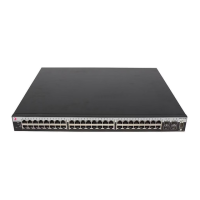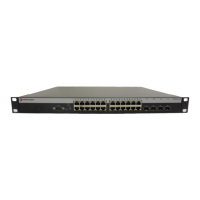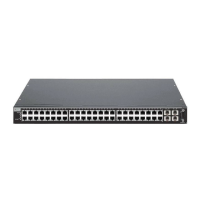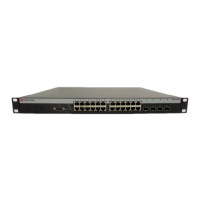Enterasys S-Series Stand Alone (SSA) Hardware Installation Guide C-1
C
About PoE (Power over Ethernet)
ThisappendixprovidesanoverviewofPoweroverEthernettechnologyandhowitis
implementedinrelationtotheS‐Seriesdevices.
Overview
PoweroverEthernet(PoE)referstotheabilitytoprovideoperationalpowerthroughthesame
EthernetcablingtoaPD(powereddevice)connectedtoadatanetwork.ModernEthernet
implementationsemploydifferentialsignalsovertwistedpaircables.Thisrequiresaminimumof
twotwistedpairsforasinglephysicallink.Both
endsofthe cableareisolatedwithtransformers
blockinganyDCorcommonmodevoltageonthesignalpair.PoEexploitsthisfactbyusingtwo
twistedpairsasthetwoconductorstosupplyadirectcurrent.Onepaircarriesthepowersupply
currentandtheotherpairprovidesa
pathforthereturncurrent.Whileseveralproprietarylegacy
implementationsofPoEhavebeendeployedbyLANequipmentvendors,in2003theIEEE
publishedtheIEEE802.3af‐2003specification,whichispartofthe802.3suiteofstandards.
TheS‐SeriesdevicesthatsupportPoEarefullycompliantwiththeIEEE
802.3afand802.3at
standards.Theysupportthestandardresistor‐baseddetectionmethod,aswellasACdisconnect
capability.
EachPDhasaPDC(PoweredDeviceClassification)thatistransmittedtotheSSAforpower
managementpurposes.Table C‐1liststheclassificationsandtheassociatedpowerrangesbased
onthe802.3afstandard.
Thistablewillbeupdatedwith802.3atclassinformationwhenthe802.3at
draftisratified.
Proprietary PD Detection
S‐SeriesdevicessupportasubsetofthecurrentlydeployedproprietaryPoEmethods.This
includessupportforCiscoPDs,includingaproprietarycapacitorbaseddetectionscheme.
Table C-1 Powered Device Classifications
Class Usage PD Maximum Power Range Usage
0 Default 0.44 to 12.95 Watts
1 Optional 0.44 to 3.84 Watts
2 Optional 3.84 to 6.49 Watts
3 Optional 6.49 to 12.95 Watts
4 Not Allowed Reserved for Future Use

